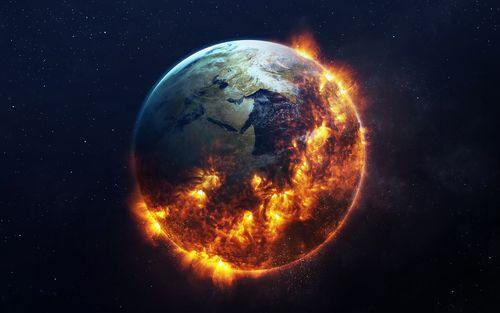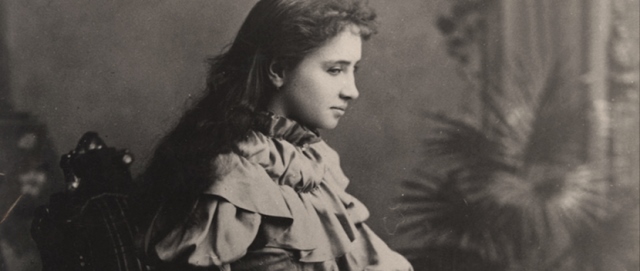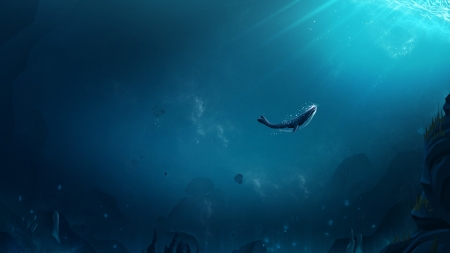Machu Picchu

Machu Picchu was build at the height of the Inca Empire around 1450 but abandoned just over a century later in 1572 after the Spanish arrival in Peru.
Machu Picchu means “Old Mountain” or Old Peak” in Quechua, the Inca language.
In the Quechua language, machu means “old” or “old person”, while pikchu means either “portion of coca being chewed” or “pyramid, pointed multi-sided solid; cone”. Thus the name of the site is sometimes interpreted as “old mountain”. Archaeologists believe Machu Picchu was constructed for use as a Royal Estate.
Machu Picchu is located 2430 m (7970 ft) above sea level on a ridge between the Huayna Picchu and Machu Picchu mountains in Peru. Due to its mountain setting, Machu Picchu can’t be seen from below. Consequently, it was one of the only cities built during the Inca civilisation that survived the Spanish conquest.
On July 24, 1911, American explorer Hiram Bingham III with the help of Melchor Arteaga, re-discovered Machu Picchu. Bingham bought word of the ruins to the outside world. Only locals and a handful of missionaries and engineers had known of the site’s existence. Hiram Bingham baptized Machu Picchu as the ‘Lost City of the Incas’, because when he arrived at it; he thought it was the city of Vilcabamba, the last refuge of the Incas after the conquest.
Bingham’s team excavated an estimated 40,000 artifacts and gave to Yale University for further study including mummies, ceramics, silver statues, jewellery and bones. Peru has long wanted these artifacts back and an agreement was recently agreed for the majority of these items to be returned.
Since re-discovery over 30% of Machu Picchu has been reconstructed to give a better idea of how the original structures looked, restoration continues today. In 1983, Machu Picchu became an UNESCO World Heritage Site. In 2007 it was voted one of the New Seven Wonders of the World in a worldwide Internet poll.
Machu Picchu was built in a typical Inca style, with beautiful, polished dry-stone walls of quarried granite stone. The Incas were experts at using a building technique called ashlar in which blocks of stone are cut so precisely as to fit together tightly without mortar. The incredible civil engineering techniques of the Incas reduced the affects of frequent earthquakes. Mortar-free walls, Trapezoidal, tilted inward and round corner doors and windows helped protect many of the buildings from collapsing.
It is estimated that 60% of the construction done at Machu Picchu was underground, including deep building foundations and crushed rock for drainage. Machu Picchu’s construction is amazing considering the Inca’s did not use draft animals, iron tools, or the wheel. It’s a mystery how the massive blocks of stone were moved up steep terrain and through dense bush, but it is generally believed that hundreds of men were used to push the stones up.
Machu Picchu had access to springs for water and enough terraced and irrigated land to grow food for around four times as many people as ever lived there. The Machu Picchu site is divided in an urban area and an agricultural area. With an upper town area where royalty lived and temples built and a lower town area that included workers quarters and warehouses. Machu Picchu is made up of more than 150 buildings ranging from baths and houses to temples and sanctuaries. The compound contains more than 100 separate flights of stairs. Most of the individual staircases were carved from one slab of stone.
Machu Picchu is also considered as an astronomical observatory, and its sacred Intihuatana stone accurately indicates the two equinoxes. Twice a year, the sun sits directly over the stone creating no shadow. Due to its location high in the mountains, every day until roughly midday a blanket of mist covers Machu Picchu. This creates the feeling of floating amongst the clouds. However, legend has it that at night, spirits rise from the ground and try to take people away.
The Incas built a road to the Machu Picchu region and today thousands of tourists trek the 2-5 day high-altitude Inca Trail to visit Machu Picchu. The Inca Trail is infamous but the lesser-known Inca Quarry Trail, departing from Ollantaytambo, leads you past local communities and visits significant archaeological sites, away from the tourist trail and into the Andes mountain range. Plus, you travel with horses to help lighten the load.
The Machu Picchu National Park houses the Huayna Picchu mountain. This mountain is so popular that if you want to come in high season, tickets must be reserved 6 months in advance. To get to the top of the mountain Huayna Picchu will cross paths and stairways. In some cases, the stairs are built on the side of cliffs several hundred meters. Just seeing the images of the road Huayna Picchu discourages many people. However, there have never been accidents to regret. In the mountain Huayna Picchu is the Great Cave or Temple of the Moon. The function is this mysterious construction in full cave is still a mystery. Huayna Picchu is considered one of the most incredible short walks in the world. The entry ticket is the most desired in Machu Picchu.
While Spanish conquistadors brought the end of the Inca empire, evidence suggests the site of Machu Picchu was abandoned before this time. Scholars have proposed the idea of a smallpox epidemic, but without any solid evidence, the real reason remains a mystery.
As Peru’s most visited tourist attraction Machu Picchu is continually threatened by commercial forces. In the 1990s, the construction of a cable car, luxury hotel, and restaurants was allowed nearby. Being South America’s most famous ruin and Peru’s most visited attraction, there’s a no-fly zone above the site, a visitor limit of 2,500 per day and visitors must obtain a permit and a guide to hike the Inca Trail.
A Bollywood film called “Robot” was one of the few films that has been granted permission to film at Machu Picchu. The sanction for filming was granted only after direct intervention from the Indian government. The result was a crane damaging a part of the site, causing an uproar!
Machu Picchu was chosen in 2016 as the best destination in the world in a vote by users of the travel website ‘TripAdvisor’.




